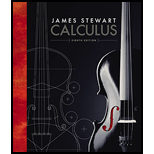
Suppose S and E satisfy the conditions of the Divergence Theorem and ƒ is a scalar function with continuous partial derivatives. Prove that
These surface and triple integrals of vector functions are
Want to see the full answer?
Check out a sample textbook solution
Chapter 16 Solutions
Calculus 8th Edition
- Find the equation of the tangent line to the graph of the given function at the given value of x. 6 f(x) = x(x² - 4x+5)*; x=2arrow_forwardFind the equation of the tangent line to the graph of the given function at the given value of x. f(x)=√√x+33; x=4arrow_forwardFind g[f(-7)]. f(x) = x² + 1; g(x)=-5x-1arrow_forward
- Find the x-values where the following do not have derivatives.arrow_forwardLet f(x)=7x²-2x and g(x) = 5x+3. Find f[g(k)].arrow_forwardExpress the integrand as a sum of partial fractions and evaluate the integral. 2 32s+ 32 (s²+1) (s-1)3 ds Express the integrand as a sum of partial fractions. (Simplify your answer.)arrow_forward
 Elementary Linear Algebra (MindTap Course List)AlgebraISBN:9781305658004Author:Ron LarsonPublisher:Cengage Learning
Elementary Linear Algebra (MindTap Course List)AlgebraISBN:9781305658004Author:Ron LarsonPublisher:Cengage Learning
